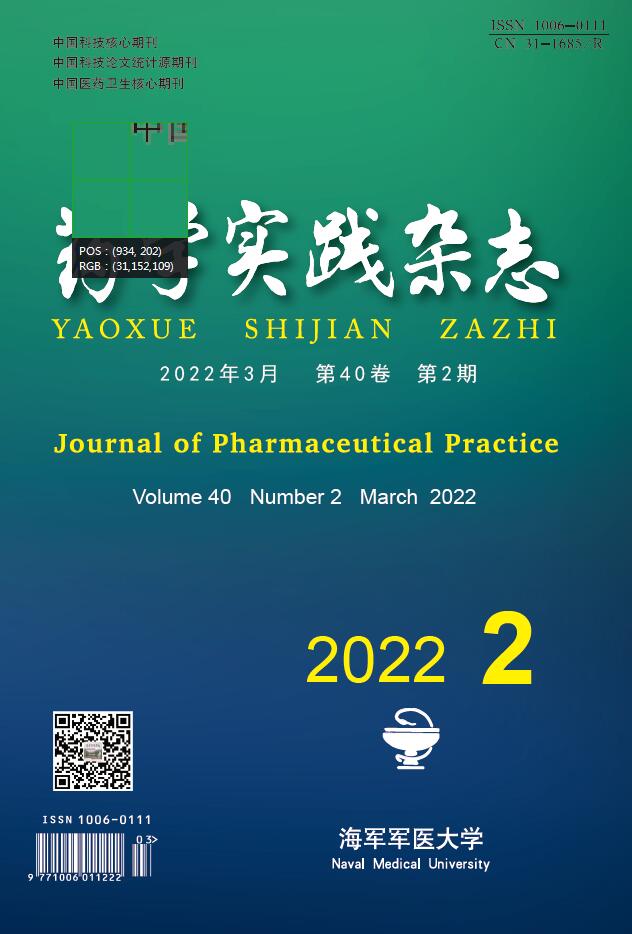-
随着我国经济的高速发展,人民的生活水平和医疗卫生保健水平不断提高,而生育率则始终保持在较低水平上,中国开始步入了老龄化社会。有文章称,到2022年左右,65岁以上人口将占到总人口的14.0%,中国实现向老龄社会的转变[1]。在全国大力推广居家养老的同时,居家老人的安全用药问题[2]也随之增大。老年人普遍患有慢性疾病,而老年人合理用药观念的普及又相对落后,往往容易出现用药不规范、滥用药物的情况。空巢老人作为老人群体中较为庞大又特殊的人群,较非空巢老人更易发生上述情况。由于不规范用药引发的病情加重、不良反应,导致居家养老的安全风险上升。为更规范药学服务发展,进一步提升药学服务水平,促进用药合理[3]。本研究主要从空巢与非空巢老年高血压患者的用药情况进行比较分析,为社区药学服务人员开展药学服务工作提供参考。
-
调查对象为欧阳路街道在住居民,采用整群随机抽样的方法,从18个居委会抽取年龄≥60岁的老年高血压患者为研究对象,分为空巢和非空巢老年患者进行研究。空巢老人即无子女或子女不在家居住时间超过半年及以上、子女探访频次每周<1次。纳入标准:①符合《中国高血压防治指南》中的诊断标准[4];②语言交流无障碍;③自愿参加并签署知情同意书。排除标准:①老年痴呆症患者;②有精神疾病、认知障碍或意识模糊等难以交流者。
-
采用自行设计的问卷,对空巢与非空巢老年患者进行问卷调查。问卷结合社区药学的实际并参考相关文献[5],经过专家论证后正式定稿。主要内容包括:被调查者的基本情况(包括姓名、性别、年龄、文化程度、伴侣状况、血压控制情况及子女情况等)、高血压监测频率、在服高血压药物、在服其他药物。由经过统一培训的调查员采用一对一访谈的形式开展调查。
-
应用Epi Data3.1软件,经双录入法建立数据库;用STATA13.0软件对数据进行统计分析,计数资料以率(%)表示,采用χ2检验,以P<0.05为差异有统计学意义。
-
本次研究调查的患者有400人,其中空巢组250人(占62.5%)、非空巢组150人(占37.5%);70岁以上的老年患者共218人(占54.5%);受教育情况以初中147人(占36.8%)和高中135人(占33.8%)居多;有配偶的患者共309人(占77.3%)。详见表1。
项目 名称 分组 P 空巢 非空巢 性别 女 154(61.6) 96(64.0) 0.631 男 96(38.4) 54(36.0) 年龄(岁) 60~69 105(42.0) 77(51.3) 0.065 70~79 79(31.6) 46(30.7) 80~89 63(25.2) 23(15.3) >90 3(1.2) 4(2.7) 教育程度 小学 18(7.2) 5(3.3) 0.256 初中 96(38.4) 51(34.0) 高中 80(32.00) 55(36.7) 大学 56(22.40) 39(26.0) 婚姻状况 未婚 7(2.8) 4(2.7) 0.851 已婚 191(76.4) 118(78.7) 离异 4(1.6) 1(0.7) 丧偶 48(19.2) 27(18.0) -
在问卷调查中,空巢组与非空巢组每天对自身血压进行监测的分别为84人(占33.6%)、29人(占19.3%);每月对自身血压监测的分别为35人(占14%)、31人(占20.7%)。两组患者对血压监测频率的差异有统计学意义(P<0.01),详见表2。
监测 分组 P 方式 空巢 非空巢 每天 84(33.6) 29(19.3) 0.001 每周 119(47.6) 75(50.0) 每月 35(14.0) 31(20.7) 每年 9(3.6) 15(10.0) 未测 3(1.2) 0(0.0) -
空巢与非空巢两组老年患者在服用高血压品种中,服用单一品种,两种药物联用的比例还是比较平衡的,服用单一品种分别为12人(占4.8%)、13人(8.7%);两种药物联用分别为152人(占60.8%)、97人(占64.7%)。但在服用3种降压药物上存在较大差异,其中空巢为72人(占28.8%)、非空巢25人(占16.7%),差异具有统计学意义(P<0.05),详见表3。
组别 1种 2种 3种 >3种 P 空巢 12(4.8) 152(60.8) 72(28.8) 14(5.6) 0.014 非空巢 13(8.7) 97(64.7) 25(16.7) 15(10.0) -
据调查,空巢与非空巢两组老年患者普遍存在同时服用多种药物的现象,其中包含西药和中成药,在中成药分层中,不服用中成药项,空巢为132人(占52.8%)、非空巢为99人(占66.0%);在1~2种中成药分类项中,空巢为99人(占39.6%)、非空巢为39人(占26%),存在显著差异,具有统计学意义(P<0.05),详见表4。
药物类别 品种数
(n)老年患者 P 空巢 非空巢 西药 0 7(2.80) 5(3.3) 0.161 1~2 125(50.0) 91(60.7) 3~5 96(38.4) 46(30.7) >5 22(8.8) 8(5.3) 中药 0 132(52.8) 99(66.0) 0.023 1~2 99(39.6) 39(26.0) 3~5 19(7.6) 11(7.3) >5 0(0.0) 1(0.7) 中西药 0 6(2.40) 3(2.00) 0.099 1~2 98(39.20) 76(50.67) 3~5 89(35.60) 49(32.67) >5 57(22.80) 22(14.67) -
随着年龄的增加,老年人身体机能逐渐下降,同时患有一种或多种慢性疾病的情况也随之加大。高血压作为一种常见病、多发病,发病率也呈持续增长趋势。居于老年慢性疾病首位的高血压,已经严重威胁到老年患者的健康。对于无子女或子女不在家居住时间超过半年及以上、子女探访频次每周<1次的空巢老人而言,长期的独居生活更应引起社区药学服务人员的注意,此次两组的调研结果对日后的社区药学服务具有借鉴作用。
-
老年高血压患者由于病情复杂,单一的降压药物达不到理想的控制血压要求,往往会联合多种药物协同降压。在本次调查中,服用3种降压药物的老年患者明显偏高。由于老年患者普遍文化程度偏低,根据血压变化,擅自改变服用次数、擅自停药等不安全用药行为[6],错用、滥用、重复用药潜在风险将提高。尤其是空巢组患者,长期生活在比较闭塞的环境中,缺乏与外界的交流,更容易发生上述情况。在服用中成药的种类上,选择服用1~2种中成药的人数较高,这可能与在国家大力宣扬中医药文化的背景下,老年患者普遍认为中成药的副作用、不良反应都比西药要相对小得多,很多时候选择中西药联合治疗有关。由于药物之间既能产生协同作用也会产生拮抗作用,所服用的药物越多,所产生的不良反应的概率也会加大。面对老龄化社会的到来[7],我们需要耐心地通过面对面的个性化指导、通俗易懂的科教宣传,把合理、安全的用药知识告知老年患者。今后的社区药学服务中应更注重多样化的药学帮助,例如可以定期或不定期的家访、电话访问,了解他们最近的服药情况;制作个性化的药物治疗记录单,记录患者的基本情况、临床化验指标、服用药物种类及用法用量、药物产生的不良反应,执行医嘱情况等等[8-10],以便出现问题时,及时发现,避免产生严重的身体损害。
-
本次调查发现,空巢组每日血压监测比例较非空巢组高出14.3%。血压监测作为控制血压的重要手段之一,保持良好的测压频率是十分可取的手段,但在血压控制相对稳定且达标的情况下,每周自测1~2d[11]即可。过于频繁地监测血压数值反而容易引起一定程度的心理负担,容易造成焦虑的情绪。由于空巢这类特殊人群长期子女不在身边,人文关怀、日常生活料理和医疗服务均不能达到满意程度,导致他们心理健康不佳,产生焦虑。社区药学人员应重点关注该类人群,为他们提供的药学服务不是简单地根据医嘱交待如何用药,除了药物治疗教育外还有一些非药物治疗宣教手段需要协同配合,例如改变不良的生活习惯、控制体重、合理饮食、有氧运动等等[12]。
-
在健康中国的大背景下,根据目前老年人患有多种慢性病服用多药,尤其是作为弱势群体的空巢老人,可以融入多学科专业人员,组成一个集全科医师、护师、公共卫生医师、药师、心理咨询师、健康管理师等“多师”服务团队。社区药师可以联合原有的家庭医生团队[13],通过全科医师专业的诊疗,社区药师协助其制定精准的药疗方案,通过公共卫生对患者的血压分级,有针对性地把安全、合理、有效的用药知识告知老年患者。社区药师还可以联合健康管理师将一些行之有效的非药物治疗手段传递给社区的老年患者。针对空巢老年患者,护师在原有的定期随访中,不仅观察他们的血压变化,同时协同心理咨询师重点关注他们的心理健康,在思想上多与其交流沟通,积极传递正能量,缓解患者精神紧张、焦虑等情绪。通过全方位、多学科共同合作,及时帮助他们解决疑惑。
综上所述,通过本次对空巢与非空巢两组老年患者的服用药物比较、分析,在我国老龄化持续加重的大背景下,社区药学服务人员需要对老年患者特别是空巢老年患者进行有的放矢的用药宣传,并参与慢性疾病的治疗,优化原本的健康教育服务,通过积极的预防教育改善原本不良的用药行为,从而使得我们的社区药学服务也能符合“老龄化健康”的要求。
Analysis of drug use in community empty-nest and non-empty-nest elderly hypertension patients
doi: 10.12206/j.issn.1006-0111.202110068
- Received Date: 2021-10-21
- Rev Recd Date: 2021-12-27
- Available Online: 2022-03-29
- Publish Date: 2022-03-25
-
Key words:
- aging /
- empty-nest elderly /
- non-empty-nest elderly /
- community pharmacy service
Abstract:
| Citation: | LI Yan, CHEN Shuqin, SHEN Mei, YUAN Yang, HUANG Jiaoling, SUN Wanjing, SHEN Jiahui. Analysis of drug use in community empty-nest and non-empty-nest elderly hypertension patients[J]. Journal of Pharmaceutical Practice and Service, 2022, 40(2): 184-187. doi: 10.12206/j.issn.1006-0111.202110068 |









 DownLoad:
DownLoad: